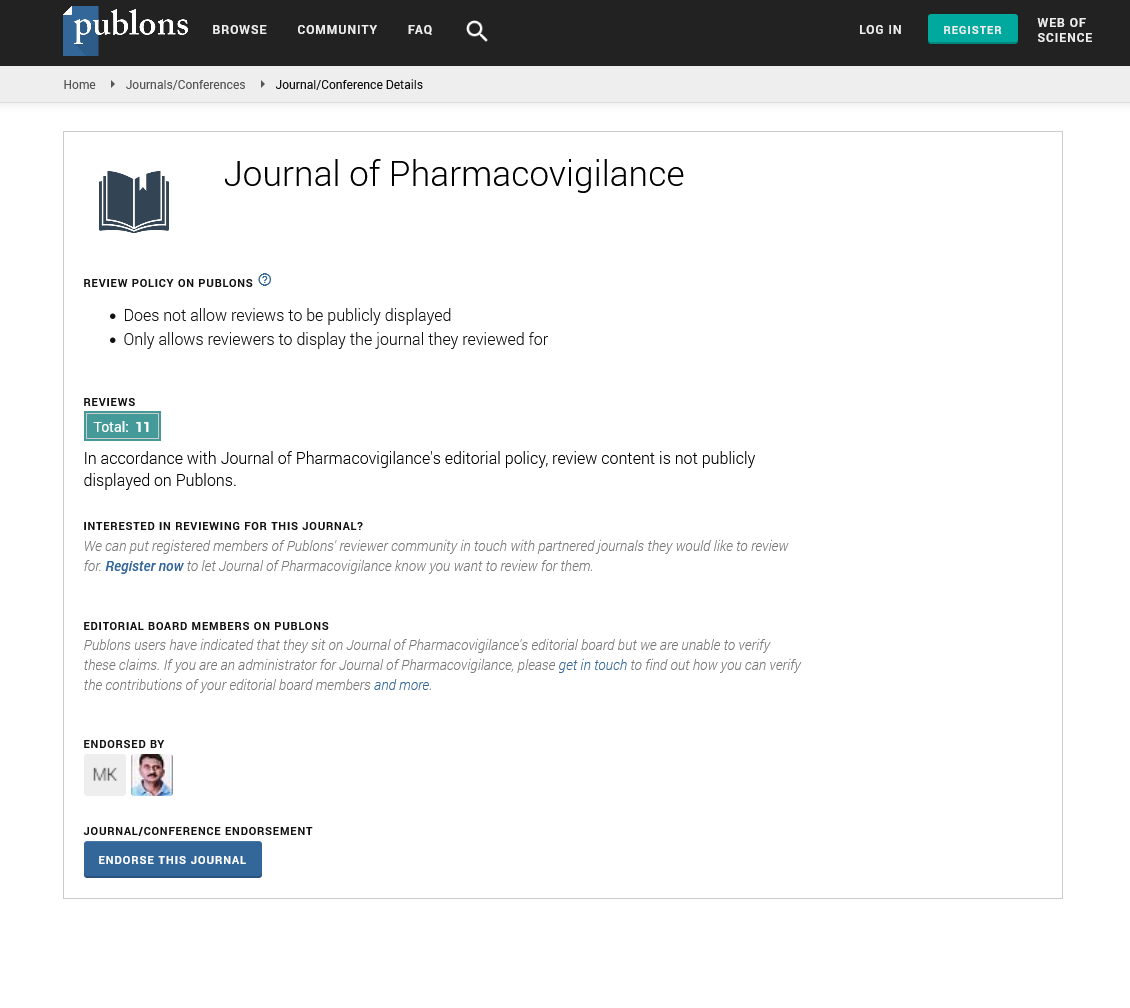Indexed In
- Open J Gate
- JournalTOCs
- The Global Impact Factor (GIF)
- RefSeek
- Hamdard University
- EBSCO A-Z
- OCLC- WorldCat
- Publons
- Euro Pub
- Google Scholar
Useful Links
Share This Page
Journal Flyer

Open Access Journals
- Agri and Aquaculture
- Biochemistry
- Bioinformatics & Systems Biology
- Business & Management
- Chemistry
- Clinical Sciences
- Engineering
- Food & Nutrition
- General Science
- Genetics & Molecular Biology
- Immunology & Microbiology
- Medical Sciences
- Neuroscience & Psychology
- Nursing & Health Care
- Pharmaceutical Sciences
Short Communication - (2022) Volume 10, Issue 12
Analysis of Clinical Pharmacology and Different Pharmacology Techniques
Boulton Gulmez*Received: 11-Nov-2022, Manuscript No. JP-22-19390; Editor assigned: 14-Nov-2022, Pre QC No. JP-22-19390 (PQ); Reviewed: 02-Dec-2022, QC No. JP-22-19390; Revised: 13-Dec-2022, Manuscript No. JP-22-19390 (R); Published: 22-Dec-2022, DOI: 10.35248/2329-6887.22.10.408
Description
Experimental pharmacology deals with the effects of various test substances studied in different animal species, and their mechanisms and sites of action, with the goal of finding safe treatments suitable for public health. It is a fundamental way to discover new drugs or study the pharmacological effects of already developed drugs using both preclinical and clinical trial designs in a stepwise exploratory phase. It's a step. However, investigations in the first stages of experimental pharmacology are usually concluded with hypothetical hypotheses without adequate validation of scientific evidence. Experimental pharmacology is the study of experimental design in controlled settings to test pharmacologically unknown substances or medicinal products in humans and animals. It addresses the effects of various test substances being studied in different animal species, and their mechanisms and sites of action, with the goal of finding safe therapeutics suitable for public health [1].
Experimental pharmacology is based on null technology because the biochemical reactions that convert receptor activation into cellular responses are largely unknown. Using the Null method removes the need to understand these mechanisms. H. Similar receptor actions of drugs in a given system are thought to be translated by cells in an identical manner. It has nothing to do with Safety pharmacology assays, trials, and models predict the clinical risk profile of potential new drugs before first human trials. During clinical development, safety pharmacology is used to investigate and potentially explain expected and unexpected adverse events (adverse events, changes in vital signs, laboratory abnormalities, etc.) can improve the clinical risk profile of this chapter introduces the reader to the role of safety pharmacology in translational medicine. The science of translating on-target and off-target non-clinical properties of potential drugs into clinical outcomes in order to select the best drug candidates for early clinical trials [2].
Pharmacology can also focus on specific systems that make up the body. Departments related to body systems study the effects of drugs on various body systems. These include neuropharmacology of the central and peripheral nervous system. Other departments include cardiovascular, renal, and endocrine pharmacology. Psychopharmacology is the study of the use of drugs that affect the mind, spirit, and behavior (such as antidepressants) in the treatment of mental disorders. Pharmacometabolomics, also known as pharmaco-metabolomics, is a field derived from metabolomics, the quantification and analysis of metabolites produced by the body [3]. It refers to the direct measurement of metabolites in human body fluids to predict or assess the metabolism of pharmaceutical compounds and to better understand the pharmacokinetic profile of drugs. Pharmaco-metabolomics can be used to measure metabolite levels after drug administration to monitor the effects of drugs on metabolic pathways. Pharmacomicrobionics investigates the impact of microbiome changes on drug properties, efficacy and toxicity [4].
Pharmacomicrobiomics deals with interactions between drugs and the gut microbiota. Pharmacogenomics is the application of genomic technologies for drug discovery and further characterization of drugs related to the entire genome of an organism. Pharmacology can be applied to clinical science. Clinical pharmacology is the application of pharmacological methods and principles in the study of drugs in humans. An example of this is medication, which is the study of how drugs are administered. Pharmacodynamics is defined as the body's response to drugs. Pharmacological models include Hill equation, Cheng-Prusoff equation, and child regression [5]. Pharmacodynamic theory often studies the binding affinity of a ligand to its receptor. Drugs are designed to have narrow or wide therapeutic indices, specific safety factors, or therapeutic windows. This represents the relationship between desirable and toxic effects. A compound with a narrow therapeutic index exerts the desired effect at near-toxic doses. A compound with a broad therapeutic index (greater than 5) can also effects the drug toxicity. Those with narrower margins are more difficult to medicate and administer and may require therapeutic drug monitoring (examples include warfarin, some anticonvulsants, and aminoglycoside antibiotics). Therapeutic indices of most anticancer agents are narrow: Toxic side effects occur most often at doses used to kill tumors.
References
- Brater DC, Daly WJ. "Clinical pharmacology in the Middle Ages: principles that presage the 21st century". Clin Pharmacol Ther. 2000; 67 (5): 447–450.
[Crossref] [Google Scholar] [PubMed]
- Gomez A, Ingelman-Sundberg M. "Pharmacoepigenetics: its role in interindividual differences in drug response". Clin Pharmacol Ther. 2009; 85 (4): 426–430.
[Crossref] [Google Scholar] [PubMed]
- Smith J, Stein V. "SPORCalc: A development of a database analysis that provides putative metabolic enzyme reactions for ligand-based drug design". Comput Biol Chem. 2009; 33 (2): 149–159.
[Crossref] [Google Scholar] [PubMed]
- Arnold RJ, Ekins S. "Time for cooperation in health economics among the modelling community". PharmacoEconomics.2010; 28 (8): 609–613.
[Crossref] [Google Scholar] [PubMed]
- Broichhagen J, Frank JA, Trauner D. "A roadmap to success in photopharmacology". Acc Chem Res. 2015; 48 (7): 1947–1960.
[Crossref] [Google Scholar] [PubMed]
Citation: Gulmez B (2022) Analysis of Clinical Pharmacology and Different Pharmacology Techniques. J Pharmacovigil. 10:408.
Copyright: © 2022 Gulmez B. This is an open-access article distributed under the terms of the Creative Commons Attribution License, which permits unrestricted use, distribution, and reproduction in any medium, provided the original author and source are credited.

